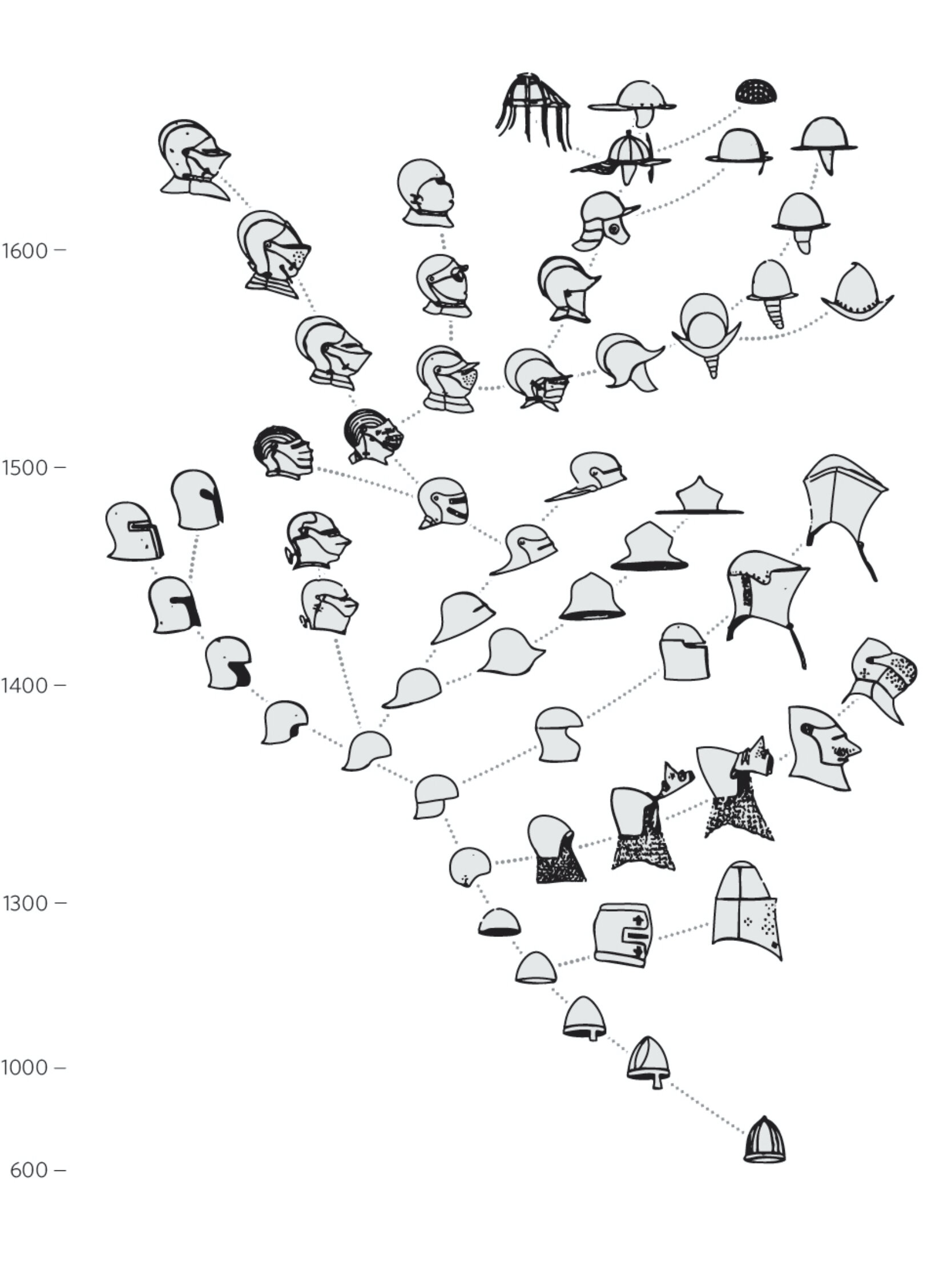The Theory of Tech Evolution
On break, I love reading classic books. What Technology Wants by Kevin Kelly, founder of Wired Magazine, was published in 2010. His Theory of Tech Evolution is fun to revisit in the age of AI.
Kelly compares technology evolution to biological evolution. Mostly, he points out the vast differences between them. For example, biology transforms incrementally, like the evolution of helmets:
The evolution of medieval European helmets starting in the year 600. By Bashford Dean via Kevin Kelly in What Technology Wants.
By contrast, technology evolution is more frenetic. Kelly makes four key assertions about how technology evolves:
Technology often makes big abrupt leaps. Big leaps are so common that marketing departments regularly declare paradigm shifts, disruptions, game-changers. Sometimes they’re right.
New evolutionary lines form new ecosystems of cross-supported allies.
Older ideas merge and hatch idea-lings that borrow and blend traits from “extinct” ideas.
Idea-lings are rewarded with more copies that spread steadily through the population.
This visualization of the design heritage of trumpets illustrates technology evolution. Horizontal lines show big innovation leaps. Vertical lines show innovations passed from living parents vertically to offspring. Very few entirely new ideas come along (marketing departments take note!)—in this example, there’s just one, upper right. Dotted lines show borrowing from far earlier technology. Most blending happens laterally over time.
The evolution of trumpets helps explain the evolution of technology. See endnote 1 for more.
* * *
Technologies mostly do not go extinct. Biological species, in the long run, do. Kelly illustrates this by picking a random page from the Farm tools section of the 1894–95 Montgomery Ward catalog. He figured farm tools would be more likely to perish than lamps, clocks, pens, and hammers from the rest of the catalog.
Every farm tool is still available. Not as antiques on eBay. You can buy them all, new, today (in 2005, at least).
Farm tools section of 1894–95 Montgomery Ward catalog, at left. Each was still for sale, 100 years later, shown at right.
Why doesn’t technology go extinct? Kelly suggests that technologies are idea-based, and culture is their memory. Moreover, in the cloud era, ideas are recorded, shared, found, and recovered more efficiently than ever before.
Ideas and technologies are forever.
* * *
Evolution and Mods
We’re testing Kelly’s Theory of Technology Evolution in 2021 with a new technology we call Spotfire Mods.
Spotfire Mods borrows an idea from the video game branch of innovation, also called Mods. In video games, Mods make it easy for any developer to create, blend, and merge new ideas into existing games. Mods are frameworks that make it easy to inherit everything that makes the parent special via a simple API. My favorite example is how one developer extended Skyrim with a fire-breathing dragon in the form of wrestler Randy “Macho Man” Savage.
Spotfire applies this video game Mod idea to analytics. Like gaming mods, Spotfire Mods makes it easy to borrow, blend, merge, and extend analytics.
We hope Mods will apply Kelly’s theory of technology evolution in 2021; watch this space to see the idea-lings hatch!
FOOTNOTES:
1) Niles Eldredge applied taxonomic methods to his collection of 500 cornets, some dating back to 1825. He selected 17 traits—the shape of their horns, the placement of the valves, the length and diameter of their tubes. This map shows the evolution of cornets to how technology evolves. He found that the key difference between the evolution of multicellular life and the evolution of technology is that in life most blending of traits happens “vertically” in time. Innovations are passed from living parents down (vertically) through offspring. - Kevin Kelly, What Technology Wants.
Read more from Kevin Kelly in his original essay, What Technology Wants, or read these similar articles on this blog:




